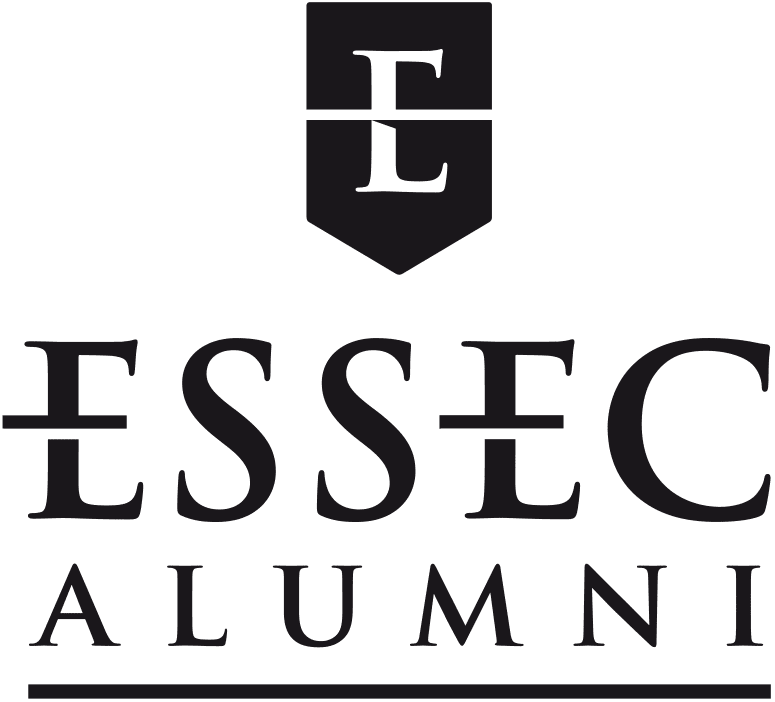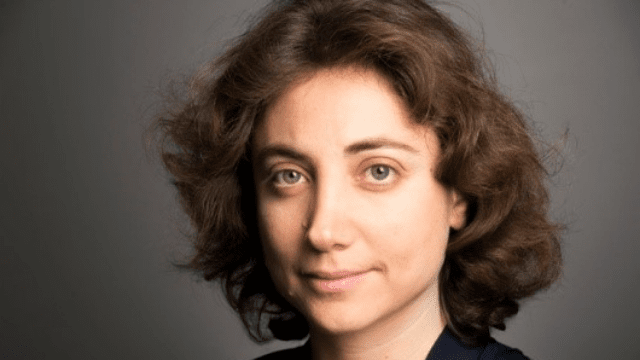Nadine Chehade (E99): “The Arab World Needs More Fairness in Growth"
Nadine Chehade (E99) works as an expert in inclusive finance for the Arab world with the CGAP (Consultative Group to Assist the Poor), a think tank hosted by the World Bank. She warns of the rise in poverty in the Arab region, particularly in Lebanon, and offers some solutions.
ESSEC Alumni: How did you move from consulting to inclusive finance?
Nadine Chehade: I’ve always had an interest in economic development. As this option didn’t exist at ESSEC, I chose a specialisation in finance, which led me to merchant banking then strategy and management consulting. I ended up taking sabbatical leave to devote my time to a Lebanese NGO with a microfinancing scheme. Following this experience, I applied for a position at Planet Rating, which is part of the PlaNet Finance group, now known as Positive Planet. I was there for 6 years before joining the CGAP, a World Bank think tank specialised in inclusive finance, which laid the foundations of modern microfinancing.
EA: Who is inclusive finance geared towards?
N. Chehade: There are currently more than a billion individuals who do not have access to a bank account and over 130 million formal businesses in developing countries in need of funding. This doesn’t include the micro and very small informal businesses which account for 70% of employment and a third of the world’s GDP. Between 1995 and 2005, around 150 million customers benefited from the modern microfinance model, as defined by the CGAP. This represented a great advance and yet a rate of progress which was still too slow given the number of people excluded from the financial system. Then the arrival of mobile phones changed everything...
EA: How so?
N. Chehade: In the mid-2000s, more than half of the people excluded from the formal finance system possessed a mobile phone and started trading airtime as soon as this was possible. We witnessed the beginnings of the mobile currency revolution and the emergence of digital finance, in particular with the success of the M-PESA service in Kenya, the democratisation of access to a bank account in India, or the Alibaba and Tencent initiatives which enabled begging via QR code in China. Between 2011 and 2017, some 1.2 billion individuals gained access to an account for the first time, an eightfold increase on the rate which microfinancing allowed, and in just half the time. Opportunities flourished, specifically thanks to electronic wallets, even if the market share for these early fintechs did not exceed 10% on a world level. That said, the risks involved also grew.
EA: What risks?
N. Chehade: While microfinance services are based on close knowledge of the entrepreneurs and the economic and social fabric (and so a “low-tech, high-touch” human resources-hungry and thus relatively costly model), digital financial services are based on an in-depth analysis of financial transactions (in line with a “high-tech, low-touch” data-hungry model, which requires much fewer human resources in customer contact). From a transactional account, it became possible to offer, to scale and thus potentially at the lowest cost, other small-sum services, such as the nano loan ($5, $10 or $20), dematerialised loans, loans based on psychometric tests, and sometimes “easy” loans; thus a multitude of services whose rapid growth could prove disastrous if it not accompanied by consumer protection measures.
EA: How is the sector faring at present?
N. Chehade: There are still a lot of issues that need to be addressed. In substance, how can we enable access to micro-savings services, international transfers and micro-insurance or pensions, while optimising the assets of low-income populations over a lifetime? On a more prosaic level, how can we combine the best aspects of high-touch and high-tech?
EA: What actions does the CGAP lead in this framework?
N. Chehade: The CGAP remains true to its vocation, that is to say, a thorough understanding of the four cornerstones of inclusive finance: legal and regulatory frameworks, financial infrastructure, the sustainability of small-scale financial services, and an understanding of the needs of low-income individuals, micro and very small businesses.
EA: You represent the CGAP in the Arab world. What specific challenges does this region face?
N. Chehade: I had hoped to finally see a reform of the financial sector after the region’s spring revolutions. This wasn’t an unreasonable hope, but one based on tangible changes, such as Tunisia’s decree law on microfinance, adopted very shortly after the revolution in 2011, and thanks to a participative process. Even in Lebanon, which has suffered from several crises, the central bank authorised the use of electronic wallets in 2021.
EA: Have your hopes been dashed?
N. Chehade: In fact, the changes are too slow in coming and the poverty rate has risen all across the region in the last ten years. Tunisia has yet to recover its 2010 GDP level, the Egyptians have not seen the benefits of recent growth translate into improved living standards, and the Lebanese are caught in a dire scenario which will serve as a textbook case for the future.
EA: What is the situation in the Lebanon?
N. Chehade: We are witnessing the massive and ultra-rapid downgrading of an entire population, coupled with what the World Bank has described as “deliberate inaction” on the part of political and financial elites “in full denial”. In 2020, our survey had already revealed that one in three customers of microfinance institutions were no longer capable of meeting their basic needs. These people are adding to the rates of poverty, which presently affects half to three-quarters of the population. It’s hard.
EA: What actions are being led by the CGAP, in light of this situation?
N. Chehade: We examined the impact of the crisis, in addition to that of the pandemic, on economically active populations at the bottom of the income pyramid, who form the core target of the microfinance sector, and then analysed the emergence of new structures meeting financial needs. Our current efforts are focused on the search for concrete solutions in the short and medium term, in a context of uncertainty and the disintegration of traditional players, who nevertheless remain essential. It’s a real challenge.
EA: What are the prospects for the coming months?
N. Chehade: Bleak. Literally. Lebanon’s national electricity company currently supplies a maximum of two to three hours of power to Beirut per day. At best, it will take several months before rising to eight hours per day, further to a potential agreement with Egypt, Syria and Jordan. No energy means no growth, and certainly no fintech!
EA: What solutions can you offer to this situation?
N. Chehade: The most urgent need is to stabilise the current situation. For example, we’re trying to safeguard a flagship of the region, the microfinance sector, through one of the projects I co-directed, the B5 fund (Building Beirut Businesses Back & Better). I also belong to the World Bank team helping to set up the Daem support scheme, which should act as an emergency safety net to cover the pressing needs of the poorest. Ideally, the next step would be to draw on these systems, which are fully digitalised thanks to the IMPACT e-government platform, and lay the foundations for welfare protection which would accompany the upturn in growth.
EA: And in the longer term?
N. Chehade: We will then need to offer new financial services. This is an opportunity which encompasses a variety of initiatives, originating either from the diaspora, such as Purpl, MillionBridges or CedarOxygen, or from local non-banking financial institutions, such as money transfer companies or new electronic wallet licence holders.
EA: In your view what solutions are there to the Lebanese crisis, beyond the scope of the CGAP’s action?
N. Chehade: I’d need several pages to describe them! In a word, I’d say responsibility.
Interview by Louis Armengaud Wurmser (E10), Content Manager at ESSEC Alumni
Want more content? Join us now so that we can keep bringing you news about the ESSEC network.

Comments0
Please log in to see or add a comment
Suggested Articles



